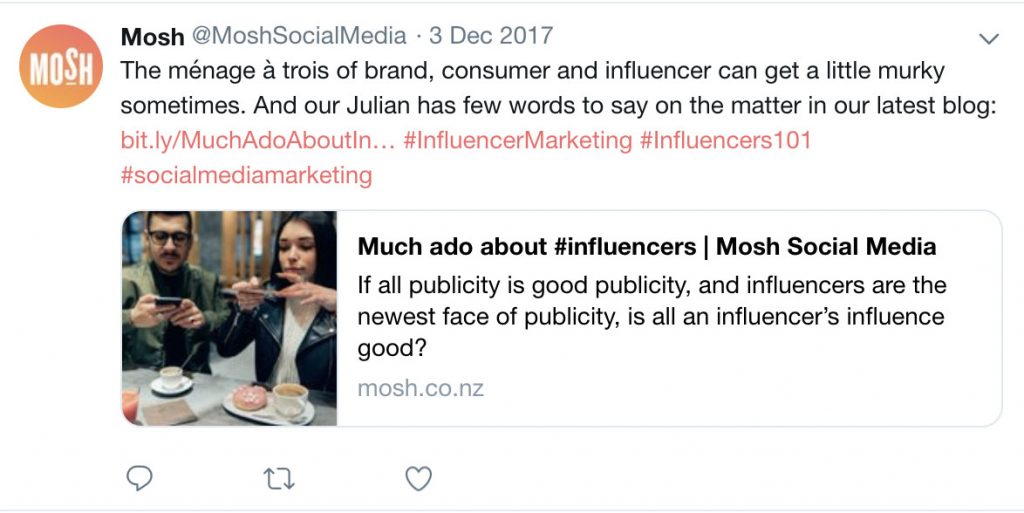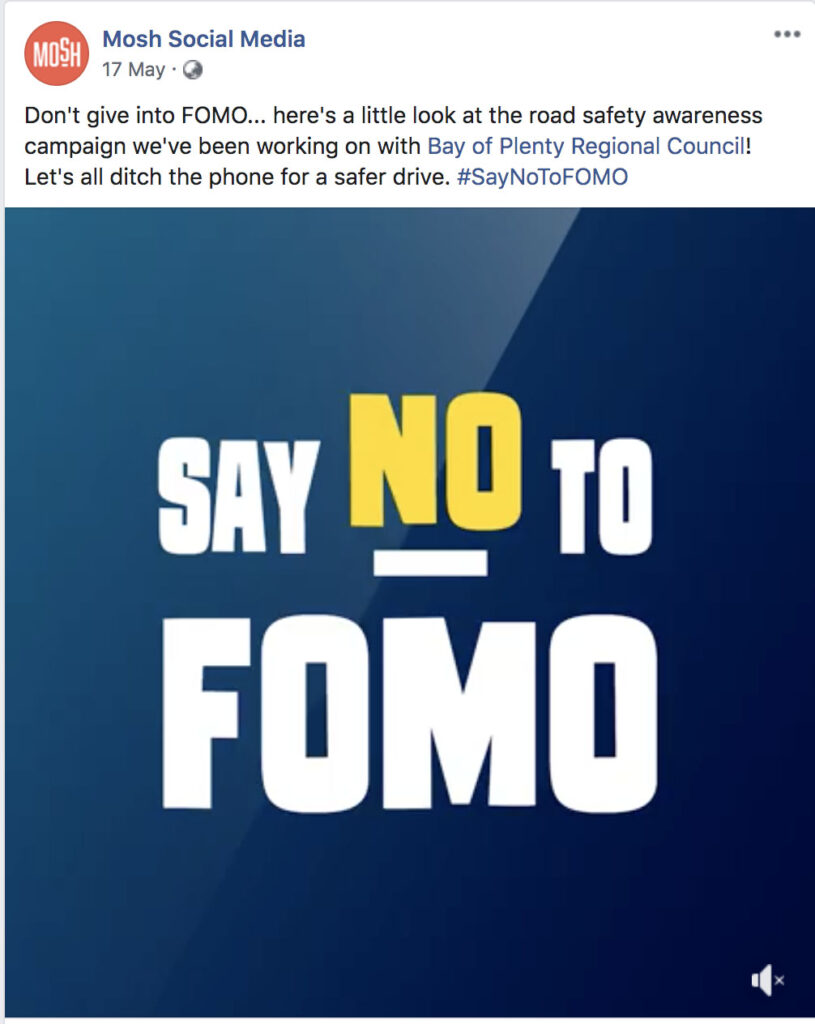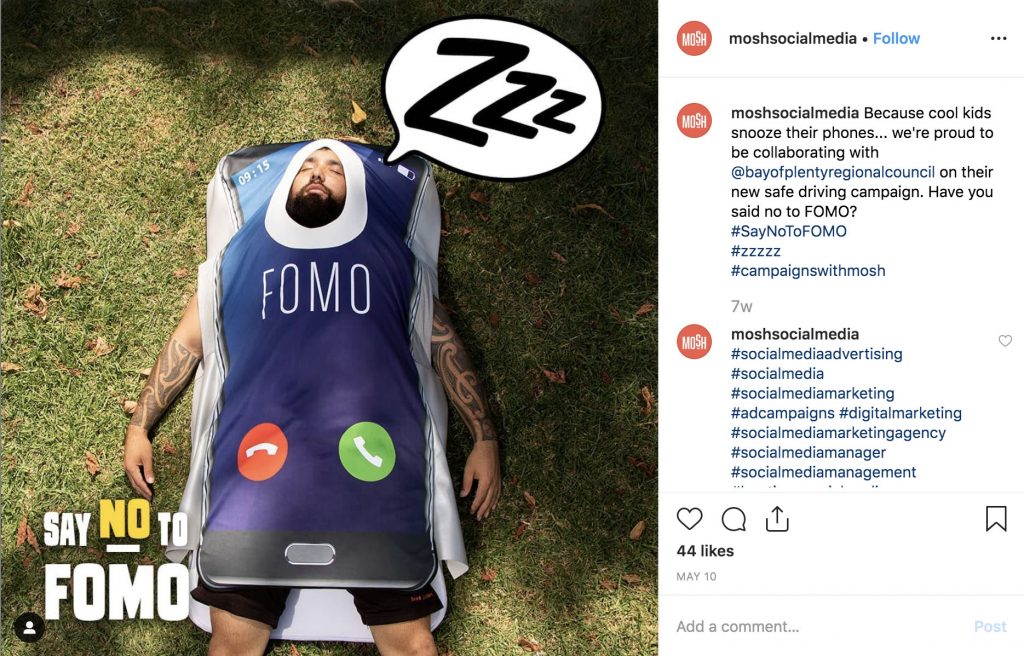The use of hashtags increases the chances that your post is seen by others and is engaged with. This is because a hashtag is indexed by the social network and found by other users interested in the same topic.
Hashtags make it possible to show publicly, and in chronological order, the posts that contain hashtags related to the same topic, in addition to facilitating exchange of information.
Tips for using hashtags effectively
- Don’t use too many hashtags (1 to 5 per post).
- Use relevant hashtags (related to the topic of the post).
- Capitalise the first letter of each word to be readable #MoshSocialMedia.
- Spell your hashtags correctly.
- Create hashtags unique to your brand (to increase visibility, engagement and brand recall).
- Take advantage of tools like Trendsmap, Keyhole or Websta to track trending hashtags.
- Create trends with your hashtags (through encouraging user generated content, competitions or events).
- Using hashtags #doesn’t #mean #tagging #every #word #you #say #in #your #posts.
Hashtags on Twitter
Hashtags are a powerful tool for Twitter. They are useful for increasing the engagement of your posts. They also allow you to have conversations with other users, and for users to find all tweets that are related to a particular topic of interest.
- Hashtags can be used anywhere in the tweet, but ideally, they should be part of the sentence.
- Sometimes less-is-more. Only use hashtags that help you to communicate your ideas.
- Get the most out of the trends to participate in conversations of massive interest. These trending topics are based on an algorithm that identifies the most popular topics in real time, taking into account the number of users that use the tag, the increase in the number of users that use it and the number of retweets that include the hashtag.
- A good way to get the best out of trending topics is to anticipate them, for example special dates or popular events, both locally and globally.
- There are tools like Tweetbinder, Trendinalia and Twxplorar that help you to track, and analyse the performance of your hashtags, as well as discover new trends.

Hashtags on Facebook
The function of the hashtags on Facebook has some similarities with respect to the hashtags used on Instagram and Twitter, for instance, these are also focused on the reach and engagement of your content. However, there are some differences that must be taken into account to optimise the results of your digital strategy.
- Place the hashtag in the first 80 characters of your post so it has more chances to be seen.
- Some researches have shown that using one or two hashtags generates more engagement than using several.
- Each hashtag used on Facebook has its own unique URL (Uniform Resource Locator) which allows traffic to that URL from other sites to activate the conversation.
- Use strategies such as Newsjacking to publish content relating to popular events or news of the moment and highlight your brand through them. (make sure that the content is consistent with your brand and target audience).
- You can also look for relevant hashtags through the search engine of Facebook or with tools like Keyhole (keep in mind that you will find the results of public accounts and pages).

Hashtags on Instagram
The use of hashtags on Instagram is one of the most popular and successful ways to highlight your content, in addition, it allows you to use up to 30 hashtags per photo. However, excessive use of hashtags can cause unnecessary spam-related problems.
Some hashtags are banned by the social network, that is, if you use hashtags like #IG, #iphone, and #loseweight, or hashtags related to violence and sex, your photo stops appearing in the rest of the tags that you use.
When used correctly, there are many more advantages than disadvantages when using hashtags. In addition to allowing you to reach your target audience effectively, you can also get greater reach with your posts, improve your engagement, appear in the section of featured publications, and increase the number of followers.
Use hashtags that are specific, popular and of high interest to your target audience as this will allow being in search results for a few minutes (this depends on the activity of the tags).
When using hashtags within your posts or stories, make sure they are related to the content of your post, the sector to which the brand belongs, the audience to which your brand belongs, and the brand itself.
Something that must be taken into account when using tags on Instagram is unwanted bots, or ‘robots’ which simulate real accounts, and whose function is to perform tasks automatically and repetitively. These computer programs fulfil predefined functions such as automatically commenting on publications that have a specific word or hashtag, in an attempt to create a community and increase their followers. You may want to remove these comments if they look inauthentic and spammy.



Thanks so much for such a great article!
I love hashtags but am careful using them, interesting to read that they are effective on Facebook as I was told ages ago they weren’t.
I cringe when I see lots of hashtags #HashtagOverkill
Thanks again ❤️❤️
Hey Debbie!
Thanks for your lovely comments!
Hashtags are especially helpful if you want your audience to find you a lot easier rather than having plain and boring copy, you can highlight your content and keywords by using them.
There is much more material to read about Hashtags, you can also check Hashtags on YouTube and Hashtags on LinkedIn (which are more focused on a specific type of content and audience).
Cheers!